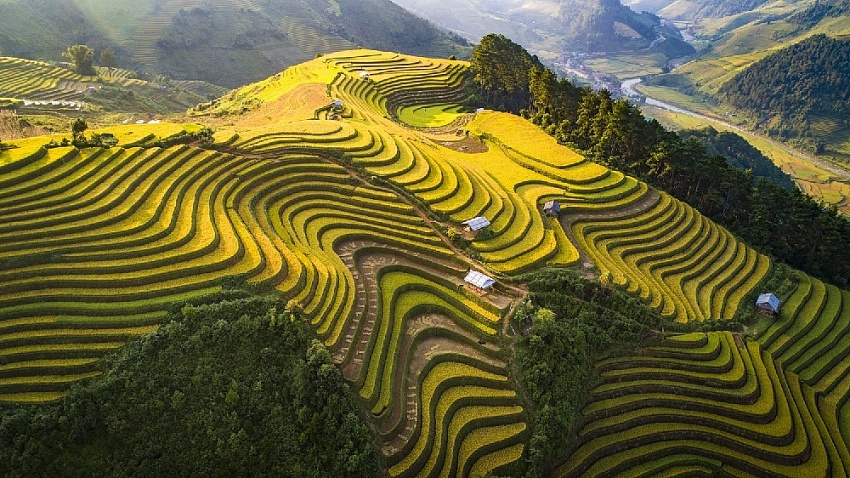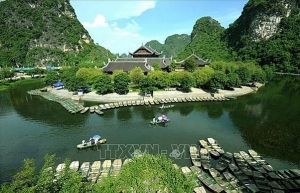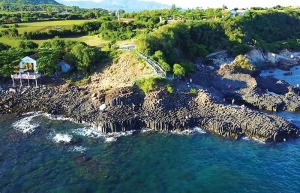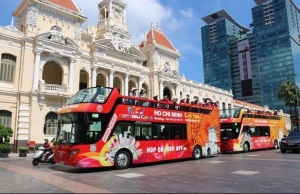Tourism transformation taking over
About a 2-hour drive from Hanoi, Yen Bai province is located in the central area of the Northern Mountains with rich natural scenery, friendly people, and a unique culture featuring 30 ethnic minorities. However, these factors have still not been attractive enough for the local tourism industry there to compete with other destinations in the northwest region, such as Lao Cai, Son La, Hoa Binh, and Lai Chau.
 |
| Tourism transformation taking over-illustration photo, Source: tule.yenbai |
Before the pandemic emerged, most tourists who knew of Yen Bai could only mention Mu Cang Chai and Thac Ba Lake, with their wild beauty, but the quality of service was deemed as poor, and the activities blasted as monotonous and not attractive enough to keep visitors for more than a day or two.
Now, however, Yen Bai is emerging as a new rendezvous every weekend, and a place where domestic tourists often return so they can experience peaceful nature. The destination is even gradually asserting its position on the map as the Dalat of the north.
This change can be traced back to the opening of Le Champ Tu Le Resort Hot Spring & Spa. Located in the middle of the rich Tu Le Valley of Nghia Lo town, with mountains on one side and fields on the other, Le Champ is full of the typical beauty of indigenous people with stylish stilt houses from the Thai ethnic group.
This is a project that originated from the idea of local investor Dao Xuan Thinh, general director of Thinh Dat JSC, and then continued to be developed by his eldest son, Dao Duc Long. Long studied in Australia and majored in finance; after graduation, he returned to Yen Bai to manage the family company. “My father always dreamt of creating a project that left a mark on the land of Tu Le, where my family has been attached for a long time. That dream became the motivation for him to put all his effort into building Le Champ Resort,” Long said.
Le Champ started out as a resort on stilts to serve the needs of a small group of tourists but has since expanded into a resort complex with nearly 100 4-star rooms, with the total investment reaching over VND150 billion ($6.5 million).
The value of the project lies not only in the landscape or architecture but also in job opportunities for the local people, as well as paving the way for other investors to explore Yen Bai’s land.
“It is something to be proud of, turning the grass-covered hills into a space like this, but we are even more proud that the resort has created jobs for people. More than 100 of our employees are local ethnic people, and their average salary is over VND5 million ($215) per month,” Long added.
This resort is becoming more and more attractive thanks to new tourism products. Long also built Aeris Hills, an adventure game park. The amusement park is located in the middle of the pine forest with the longest zipline in Vietnam, connecting the two districts of Van Chan and Mu Cang Chai. From the end of August, visitors to Le Champ continue to have a new experience with music nights held on weekends, performed by accomplished singers in Vietnam.
After Le Champ and a push from the local investor Thinh Dat JSC, Yen Bai’s tourism has begun to change despite the impact of the pandemic. The number of domestic visitors in 2021 reached 794,000, nearly 100,000 more than the number of tourists who visited in 2019. Large corporations in hotels and real estate in Vietnam such as TNR Holdings Vietnam, Vingroup, and Alphanam have since been looking for investment opportunities.
The story of Yen Bai is similar to the story of Sapa in Lao Cai province nearly a decade ago. The appearance of grand projects by the likes of Sun Group has, in recent years, changed the appearance of Sapa’s tourism industry significantly.
Before 2015, the mountain town only welcomed a few hundred thousand visitors a year, but when the Fansipan cable car was inaugurated, visitors to Sapa for the first time exceeded one million in that first year.
Since then, Sapa has had a makeover with a series of international standard resorts popping up from Wink Hotels, Hotel De La Couple, Mgallery Sapa, and Muong Thanh, as well as a series of cultural events, tourism, and sporting attractions.
In the central region, Danang, which was once considered a transit station with small houses along the Han River, has also changed dramatically since the presence of investors was felt. Danang has now become a world-famous destination with an international fireworks festival and a chain of leading luxury hotels and resorts, including InterContinental Danang Sun Peninsula Resort.
In addition, it hosts the iconic Golden Bridge and the Sun World Ba Na Hills theme park. In the first seven months of this year, the total number of tourists staying in Danang reached more than 1.88 million, up 83 per cent over the same period last year, according to the Vietnam National Administration of Tourism.
Vietnam’s tourism over the past decade has been witnessing breakthroughs in areas such as Con Dao, Phu Quoc, Quang Ninh, Binh Thuan, Quy Nhon, and Phu Yen.
| To promote new destinations and high-end, green hotels and resorts to meet the increasingly demands on wellness and rejuvenation, VIR is hosting a talk show titled Emerging Hotspots for Eco-luxury & Experienced Tourism. Time: August 25, 2022, 2.30-3.30pm The programme will be live-streamed on VIR’s website, Facebook page, and YouTube channel, including on vir.com.vn, baodautu.vn, and tinnhanhchungkhoan.vn. |
 | Ninh Binh bolstering digital transformation in tourism development Digital transformation and information technology application have important roles to play in the realisation of northern Ninh Binh province’s tourism development plan, which aims to turn tourism into a spearhead economic sector by 2030, according to the provincial Department of Tourism. |
 | Phu Yen tourism highlights safety and green tourism for rebound Tourism businesses in Phu Yen province are looking for opportunities to recover with safe products for tourists, service workers, and the community. |
 | Digital transformation needs for a tourism recovery This year is a time for tourism businesses to make changes to adapt to the pandemic’s impacts. Applying new technologies and digital transformation to both effectively prevent epidemics and create convenience for customers is identified as the inevitable direction to recover from difficulties and create a breakthrough in the technology age. |
 | Local tourism proactive in digital transformation Cities and localities across the country have devised their own digital transformation programmes, which shows they have realised the importance of digital transformation to tourism development. |
What the stars mean:
★ Poor ★ ★ Promising ★★★ Good ★★★★ Very good ★★★★★ Exceptional
Related Contents
Latest News
More News
- The destinations powering Vietnam’s festive season travel demand (December 04, 2025 | 18:33)
- Vietnam named among the world’s most exciting winter destinations (December 04, 2025 | 15:10)
- Phu Tho emerges as northern Vietnam’s new tourism hub (December 01, 2025 | 17:00)
- Vietjet completes Airbus A320/A321 updates ahead of deadline (December 01, 2025 | 09:49)
- Vietjet resumes Con Dao flights from early December (November 28, 2025 | 15:24)
- Free tickets, Lunar New Year promotions on offer at Vietjet Mega Livestream (November 26, 2025 | 15:32)
- Scandinavian Airlines and Vietnam Airlines broaden agreement with new routes (November 25, 2025 | 17:04)
- Halong Cruise Port welcomes over 3,100 international visitors (November 12, 2025 | 18:06)
- Vietnam.travel climbs to second place in Southeast Asia website rankings (November 12, 2025 | 18:01)
- Cat Ba named among Southeast Asia’s top island adventures (November 11, 2025 | 18:09)

 Tag:
Tag:



















 Mobile Version
Mobile Version